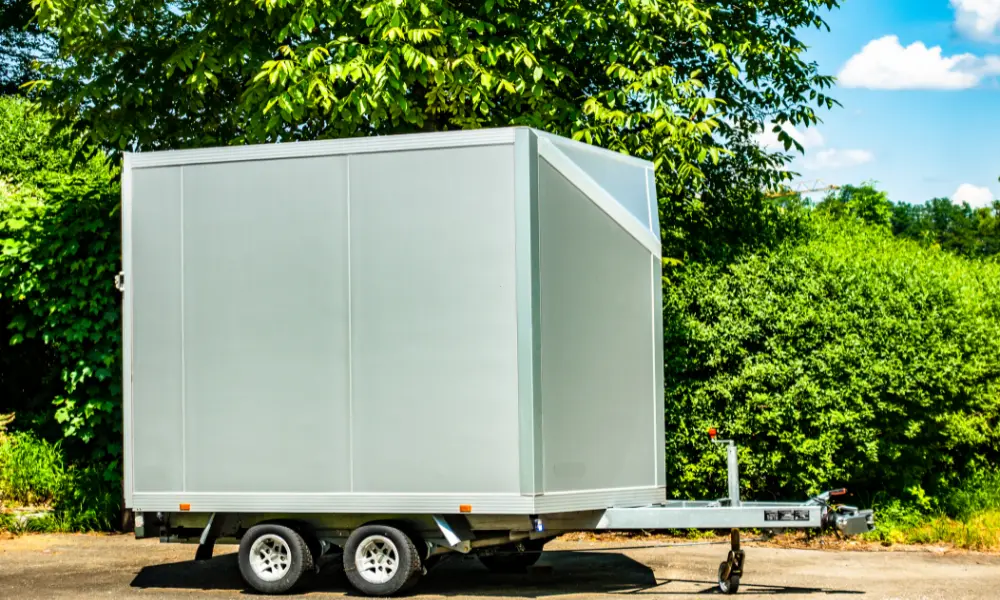Owning a car and trying to understand all the details about Ohio out-of-state vehicle inspection requirements can feel overwhelming. If you’re moving to Ohio and bringing your vehicle, there’s a lot you need to know. To register your vehicle in Ohio, you will need to convert your out-of-state title to an Ohio title.
You’ll also need to get a VIN inspection before registering your car. This inspection ensures your vehicle’s identification number matches the records. Both tasks can be completed at an Ohio deputy registrar license agency. Reading further will break down these steps, making the process easier for you.
Understanding Ohio’s Inspection Requirements
To ensure your vehicle is safe and roadworthy in Ohio, follow the state’s specific inspection requirements. You’ll need certain documents, understand the inspection process, and complete some steps after inspection.
Essential Documentation for Inspection
When preparing for an inspection, have all your essential documents ready. Bring your vehicle registration and the title. The Vehicle Identification Number (VIN) should be clearly visible and easy to check. If you are out-of-state, gather any paperwork related to the vehicle’s status.
You may also need to provide proof of address and a completed Vehicle Inspection Report if your car was previously inspected elsewhere. This documentation ensures you meet Ohio’s requirements and speeds up the process.
The Inspection Process
The inspection in Ohio involves several checks to confirm your vehicle’s safety and compliance. The Ohio BMV guidelines require checking brakes, lights, tires, and the exhaust system. If your car is out of state, it must still comply with another state’s emissions testing program.
The inspector will perform a thorough examination, ensuring the vehicle meets state regulations. The inspection focuses on various components critical to vehicle safety and emissions standards.
Post-Inspection Steps
After passing the inspection, you’ll receive a Vehicle Inspection Report. Keep this document safe, as you may need it for registration. If any issues are found during the inspection, make sure to repair them promptly and schedule a follow-up inspection.
Next, complete the process for vehicle registration or renewal with the Ohio BMV. Ensure all paperwork is in order, including the inspection reports and emissions test results if required. Properly following these steps will get your vehicle ready for the road in Ohio.
Emissions Testing in Ohio
Ohio requires emissions testing for many vehicles to maintain clean air quality. Key points to understand include the Ohio E-Check program, locations where tests are conducted, the process of emissions inspections, and options for exemptions and extensions.
Ohio E-Check Program Overview
The Ohio E-Check program is designed to reduce air pollution. It applies to vehicles that are 4-25 years old. Vehicles undergo the Onboard Diagnostics Second Generation (OBDII) test. This involves a computer scan that checks for emissions-related issues. Ohio EPA manages the program, ensuring compliance in Cuyahoga, Geauga, Lake, Lorain, Medina, Portage, and Summit counties. Testing is required biennially. Even model year vehicles are tested in even years, and odd model year vehicles are tested in odd years.
Emissions Testing Locations
There are numerous emissions testing locations across the state. Full-service E-Check stations are spread across the seven counties. Some locations may accept cash or check payments for tests. You can check the Ohio EPA website for a detailed list of testing sites. Many of these stations also handle exemption and extension requests. If you are an out-of-state motorist, you can purchase a testing voucher for $18 at one of these stations.
Understanding Emissions Inspections
During an emissions test, your vehicle’s OBDII system is scanned. This test checks if the car’s engine control module has detected any emission-related malfunctions. If your vehicle passes the test, you receive a compliance certificate valid for 365 days. It’s advisable to have your vehicle tested well in advance of the registration expiration date to avoid any last-minute issues. Vehicles that fail the test may need repairs to pass a retest.
Exemptions and Extensions
If you can’t comply with the testing requirements, you may apply for exemptions and extensions. Various exemptions exist for vehicles permanently kept out of Ohio, including those of students and military personnel. To apply, you need to complete the E-Check Exemption/Extension Application and submit it to an Ohio EPA E-Check field office or a full-service E-Check station. Non-permanent exemptions last for one test cycle, usually two years. Ensure you check if your circumstances qualify for these exemptions or extensions.
Vehicle Types and Inspection Standards
When it comes to out-of-state vehicle inspection requirements in Ohio, different types of vehicles have specific standards. Below, you’ll find detailed information about commercial and non-commercial vehicles, motorcycles, recreational and exhibition vehicles, diesel-powered and flexible fuel vehicles, as well as permanent exemptions for certain vehicles.
Commercial and Non-Commercial Vehicles
If you are bringing a commercial or non-commercial vehicle into Ohio, you must meet various inspection standards. Commercial vehicles often require more rigorous checks compared to non-commercial vehicles. The Ohio Bureau of Motor Vehicles (BMV) mandates inspections that cover safety features, emissions, and vehicle identification number (VIN) verification.
For non-commercial vehicles, such as passenger cars or family vehicles, the primary focus is often on safety inspections and emissions tests. Both categories must have an up-to-date inspection receipt at the time of registration.
Motorcycles, Recreational, and Exhibition Vehicles
Motorcycles, recreational vehicles, and exhibition vehicles have their own set of inspection requirements in Ohio. Motorcycles, for instance, must pass safety inspections focusing on lights, brakes, and tires. Recreational vehicles such as motorhomes undergo more extensive inspections that may include checks of fuel systems, weight, and structural integrity.
Exhibition vehicles used solely for shows or parades may have different standards, often focusing less on emissions and more on safety features. VIN verification is crucial for all these vehicle types to ensure authenticity.
Diesel-Powered and Flexible Fuel Vehicles
Diesel-powered vehicles and flexible fuel vehicles have unique inspection needs. Diesel-powered vehicles in Ohio must pass emissions tests tailored for diesel engines, as well as safety inspections. These inspections usually evaluate exhaust systems, fuel emission levels, and engine performance.
Flexible fuel vehicles, which can operate on a mixture of gasoline and ethanol, must also meet specific emissions standards. Both vehicle types are subject to thorough checks of their fuel systems, and you will need to provide original receipts for any replaced parts during the inspection process.
Permanent Exemptions for Certain Vehicles
Some vehicles in Ohio are eligible for permanent exemptions from inspection requirements. Typically, vehicles exceeding a certain age, such as classic cars older than 25 years, can be exempted. Similarly, vehicles used for agricultural purposes may not need regular inspections. These exemptions are designed to reduce the burden on vehicles that are either too old or serve specialized functions.
For those vehicles, model years play a significant role in determining eligibility for permanent exemptions. Generally, these exemptions are granted to maintain historical vehicles or to support specific industries without compromising safety and environmental standards.
Registration and Titling for Out-of-State Vehicles
If you move to Ohio and bring a car with you, there are several steps for registering and titling your vehicle. You’ll need to transfer the title, complete a VIN inspection, and get Ohio license plates.
Transition to Ohio Vehicle Registration
When you move to Ohio, you have 30 days to register your vehicle. First, gather your out-of-state title and proof of identity. Head to a Bureau of Motor Vehicles (BMV) office in Ohio. You will need to fill out an application for a new title, provide your out-of-state title, and pay the required fees.
In some cases, emissions testing is required. Make sure to check if your county mandates this. A safety inspection might also be required before you can fully register the vehicle.
Title Transfers and VIN Inspections
To transfer an out-of-state title to Ohio, start at a BMV office. You will need your out-of-state title, proof of insurance, and identification. Fill out the necessary forms and pay the title transfer fees. Next, complete a Vehicle Identification Number (VIN) inspection. This inspection verifies that the VIN on your car matches the paperwork.
Bring your vehicle to an inspection station, which can be a local BMV or an approved inspection site, such as the Ohio State Highway Patrol Vehicle Inspection Gateway. If the VIN matches, you will get a form confirming the inspection was successful. Return this form with your application to finalize the title transfer.
Obtaining Ohio License Plates
Once your vehicle has a new Ohio title, the next step is to get Ohio license plates. Visit a local BMV with your completed title transfer paperwork and VIN inspection form. Pay the registration fee, which varies depending on your vehicle type and its weight.
You’ll receive Ohio license plates and stickers for the current registration period. Follow these steps, and your car will be fully registered, titled, and ready to drive legally in Ohio. For more detailed steps, see Out Of State Car Title Transfer In Ohio Guide.
Special Circumstances and Considerations
When it comes to out-of-state vehicle inspections in Ohio, there are special cases including provisions for students, possible emissions waivers, and situations where BMV investigations or law enforcement may get involved.
Students Bringing Vehicles to Ohio
If you’re a student bringing a vehicle to Ohio, you’ll need to follow specific steps. Firstly, your car must pass a physical inspection if it was previously registered out of state. It’s vital that you do this within 30 days of your arrival. You can do this at a licensed Ohio dealership. Make sure to have all necessary documentation such as your Ohio title with the current owner name, and receipts for any new parts added to the vehicle.
Emissions Waivers and Challenges
Some vehicles might qualify for emissions waivers, especially if they are temporarily located out-of-state. For example, Ohio motorists who find themselves temporarily in an area not covered by another state’s emissions testing may be eligible for a six-month extension. It’s useful to know that there are various exemptions and extensions available to help you comply with Ohio’s emissions laws.
BMV Investigations and Law Enforcement
Your vehicle’s inspection data must be accurate and truthful. The Ohio BMV can conduct investigations to ensure compliance with state laws. If irregularities are found, law enforcement may also get involved. Always keep your inspection receipts and title application ready to help avoid issues. Following the Ohio Administrative Code is not just a suggestion but a requirement. This ensures that everything about your vehicle is in order and meets state regulations.
Convenient Services and Locations
When taking care of your Ohio out-of-state vehicle inspection requirements, you have several convenient options. These include self-service kiosks, finding a local certified mechanic, and taking advantage of special events and mobile services.
Self-Service Kiosks and Online Options
You can complete certain vehicle inspections at self-service kiosks set up by the Ohio Environmental Protection Agency (EPA). These kiosks are located in various places such as University Corners Plaza, making it easier for you to get your emissions testing done quickly.
The kiosks are available 24/7, allowing you to complete tasks on your schedule. Some popular kiosk locations include University Corners Plaza and other spots near major cities. By using these kiosks, you avoid the hassle of scheduling appointments and waiting in lines.
Finding a Local Certified Mechanic
If you prefer a more personal touch, you can find a local mechanic certified to perform Ohio vehicle inspections. Look for mechanics listed on the Ohio Vehicle Inspection Gateway website.
For your convenience, many mechanics operate near well-known areas such as University Corners Plaza. A couple of local options include shops around 135 North Pardee Street in Wadsworth. Certified mechanics can handle various inspection needs and provide you with the necessary documentation for your vehicle.
Special Events and Mobile Services
Occasionally, special events are held where multiple inspection services are available in one place. These events often include mobile services that come to different neighborhoods, saving you a trip. The Ohio State Highway Patrol sometimes coordinates these events to help you get your inspections done efficiently.
With mobile services, your vehicle can be inspected at various community centers or large event venues, ensuring you don’t have to go out of your way. These services usually include emissions testing, VIN verification, and other essential inspections.
Taking advantage of these convenient options makes the inspection process smooth and straightforward. Whether you choose self-service kiosks, certified mechanics, or special events, Ohio provides several choices to fit your needs.
Tips for a Hassle-Free Inspection Experience
You can make your vehicle inspection experience smoother by following some key best practices, avoiding common errors, and keeping your records organized.
Best Practices Before the Inspection
Before setting off for your Ohio out-of-state vehicle inspection, make sure you gather all necessary documents. You will need to provide your vehicle registration, proof of ownership, and identification. Keeping these in one folder can simplify the process.
Check your vehicle systems beforehand, like lights, tires, and emissions. Emissions inspection is crucial because failing can mean repeated trips and delays. Consider getting a professional pre-inspection if you’re unsure about the car’s condition.
Avoid last-minute appointments. Schedule your inspection during off-peak hours to reduce wait times. Familiarize yourself with the inspection location beforehand. Knowing where to go can save you stress and time.
Common Errors and How to Avoid Them
Common errors can make the inspection longer and more stressful. One frequent mistake is missing documents. Double-check that you have your VIN inspection papers, vehicle registration, and ID before leaving home.
Another typical error is not preparing your car adequately. Little things like low tire pressure or broken lights can result in a failed inspection. A simple check of these elements can make a big difference.
Don’t forget about the emissions inspection. Ensure your car is in compliance with Ohio emissions standards. If your vehicle fails, you may need to apply for a waiver or follow up with repairs.
After the Inspection: Keeping Records
After passing your inspection, make sure to get a copy of the vehicle inspection receipt. You’ll need this for your records and possibly for future registrations. It’s good practice to store this document in a safe, easily accessible place.
Monitor your vehicle’s performance and keep notes of any repairs or changes you make. This record helps with future inspections and can be useful if you decide to sell the car later.
Save digital copies of your documents as a backup. You can quickly access them if needed, reducing the risk of misplaced paperwork. Making it a habit to keep these records organized can lead to a smoother experience the next time you need an inspection.















